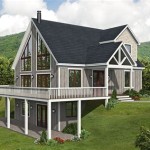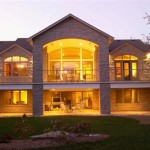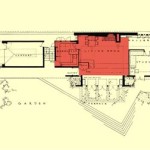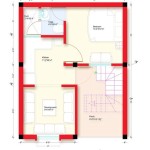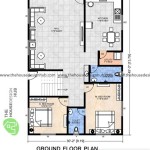Understanding Single-Family Home Floor Plans
A single-family home floor plan is a blueprint that showcases the spatial arrangement of a house designed for a single household. This plan outlines the size, shape, and placement of rooms, including bedrooms, bathrooms, living areas, kitchens, and other functional spaces. It serves as a visual representation of how the house will flow, providing a detailed breakdown of the layout and functionality of each room. Floor plans are essential tools for both builders and homeowners as they allow for clear communication about the design, construction, and overall usability of the home.
Key Elements of Single-Family Home Floor Plans
Floor plans are typically drawn to scale, allowing for accurate representation of the dimensions and proportions of each room. They include crucial details like:
- Room Names and Dimensions: The plan clearly labels each room, including its dimensions (length and width) and square footage.
- Wall Placement and Thickness: Wall locations are precisely indicated, along with the thickness of interior and exterior walls. This information is valuable for understanding the overall layout and potential for furniture placement.
- Door and Window Locations: The size and placement of doors and windows are essential for understanding traffic flow and natural light penetration. Symbol conventions typically denote different door types (e.g., sliding, double, French).
- Staircase Layout: If a house has multiple levels, the floor plan will include a detailed representation of the staircase, its dimensions, and potentially the materials used.
- Plumbing Fixtures: The location of sinks, toilets, showers, and other plumbing fixtures is indicated, providing a clear view of the bathroom and kitchen layouts.
- Electrical Outlets and Switches: Floor plans may include symbols for electrical outlets and switches, providing a visual guide for electrical wiring and placement of appliances.
Types of Single-Family Home Floor Plans
There are numerous floor plan styles and layouts that cater to diverse preferences and family needs. Common types include:
- Open Floor Plans: Characterized by minimal walls between rooms, creating a spacious and connected feel. This layout is often popular for kitchens and living areas, promoting a sense of openness.
- Traditional Floor Plans: Typically feature distinct rooms with defined walls, emphasizing privacy and separation. This layout often includes formal dining rooms and separate living and family rooms.
- Split-Level Floor Plans: Combine two or more levels with staggered floors, often connecting different rooms with a unique flow. They offer a balance of privacy and openness, typically featuring multiple levels with different uses.
- Ranch-Style Floor Plans: Single-story homes designed for ease of accessibility and convenience. They prioritize open layouts and connected living areas, often prioritizing outdoor living spaces.
- Two-Story Floor Plans: Maximize space by utilizing vertical levels, often featuring separate bedrooms on the upper floor and living areas on the ground floor. They offer privacy and flexibility in space allocation.
Benefits of Reviewing and Understanding Floor Plans
Thorough review of a floor plan offers numerous advantages for both homeowners and builders. These include:
- Visualizing the Space: Floor plans provide a tangible representation of the house, allowing individuals to visualize the flow of space and understand the relationship between rooms.
- Making Informed Decisions: Floor plans aid in making informed decisions about room sizes, layout, and overall functionality. Homeowners can assess whether the plan meets their needs and lifestyle preferences.
- Facilitating Communication: Floor plans serve as a shared language between architects, builders, and homeowners, ensuring clear understanding of the intended design and construction process.
- Identifying Potential Issues: Analyzing a floor plan can reveal potential challenges or logistical issues, allowing for adjustments and modifications before construction begins.
- Planning for Future Needs: Floor plans allow homeowners to consider long-term needs, such as accessibility for aging in place, future family growth, or potential modifications.

Design Ideas For Cost Efficient Single Family Detached Homes Probuilder

Floor Plan Of A Typical Single Family Detached House Scientific Diagram

Design Ideas For Cost Efficient Single Family Detached Homes Probuilder

Design Ideas For Cost Efficient Single Family Detached Homes Probuilder

Single Family Home Design Cad Pro

Single Family Small House Plans Floor Photos

Top 10 Duplex Plans That Look Like Single Family Homes Houseplans Blog Com

Single Family Small House Plans Floor Photos

Top 10 Duplex Plans That Look Like Single Family Homes Houseplans Blog Com

Duplex With Single Family Appearances 69382am Architectural Designs House Plans

